The ladies steal the show…..
A brand new exhibition opened at The Guggenheim on Saturday, 9th April. It’s a lovingly assembled collection of paintings and sculpture curated by Grazina Subelyte. Each element of the show has been carefully selected and precisely positioned to deliver a powerful and fascinating journey into the world of ‘Surrealism’.
The event is called ‘Surrealism and Magic’.

After the horrors, death and destruction of the First World War, philosopher and poet Andre Breton published the ‘Surrealist Manifesto’ proposing a new way of thinking that combined reality and imagination. It was a way of thinking and creating that embraced both the conscious and the subconscious mind. The surrealist artists believed in crossing traditional boundaries creating fantastical creatures, strange and sometimes disturbing scenes and exploring the depths of the human mind. These artists were also influenced by Sigmund Freud and his work on the unconscious mind. From an artistic point of view Surrealism encouraged a freeing of the mind from rational values and constraints as well as any moral or aesthetic judgement. Famous surrealist artists included Pablo Picasso, Salvador Dali, Max Ernst, Leonora Carrington, Dorothea Tanning, Remedios Varo, Leonor Fini, Rene Magritte and Yves Tanguy.
In the early years of the Surrealist movement Peggy Guggenheim enters the story. Peggy was a wealthy American heiress and collector. She opened art galleries in London, Paris and New York before settling finally in Venice in the late 1940s. Peggy was an enthusiastic and voracious supporter of both surrealist and abstract art. She encouraged and financed many contemporary artists. Peggy wrote, …….My motto was Buy a picture a day and I lived up to it……..
Peggy Guggenheim was a friend and supporter of numerous artists including Max Ernst, Rene Magritte, Yves Tanguy and Pablo Picasso. At an event in New York she famously wore two different earrings, one designed by Alexander Calder and one by Yves Tanguy to demonstrate that she appreciated and enjoyed both abstract (Calder) and surrealist (Tanguy) art. Peggy Guggenheim was a pivotal force in the surrealist art world of the 30s and 40s.
The Guggenheim exhibition skilfully displays paintings from Peggy’s private collection with art works borrowed from private and public collections. Max Ernst and Leonora Carrington feature strongly in the show. Peggy had a strong bond with Ernst, to whom she was briefly married in the 40s. The personal relationships between the artists were as surreal as their paintings. Leonora Carrington and Max Ernst were passionately involved for about a decade, they met in Paris and lived together in rural France. When war clouds darkened Europe in the early 40s and France was occupied Max Ernst and Peggy Guggenheim fled to New York and Leonora Carrington was left behind. Several years later Ernst met and married Dorothea Tanning – a young, beautiful and accomplished artist also featured in the exhibition (The Magic Flower Game) – photo above.

I’m a great fan of Leonora Carrington and I have been since The Tate Liverpool put on a big exhibition of her work in 2015. For me the ‘Surrealism and Magic’ exhibition at The Guggenheim is infused with Carrington from start to finish. Firstly there are several works by Max Ernst, who was Carrington’s lover and mentor in the 1930s. Next there’s the spectacular ‘Cat Woman’ sculpture that dominates a single room, dwarfing all else.

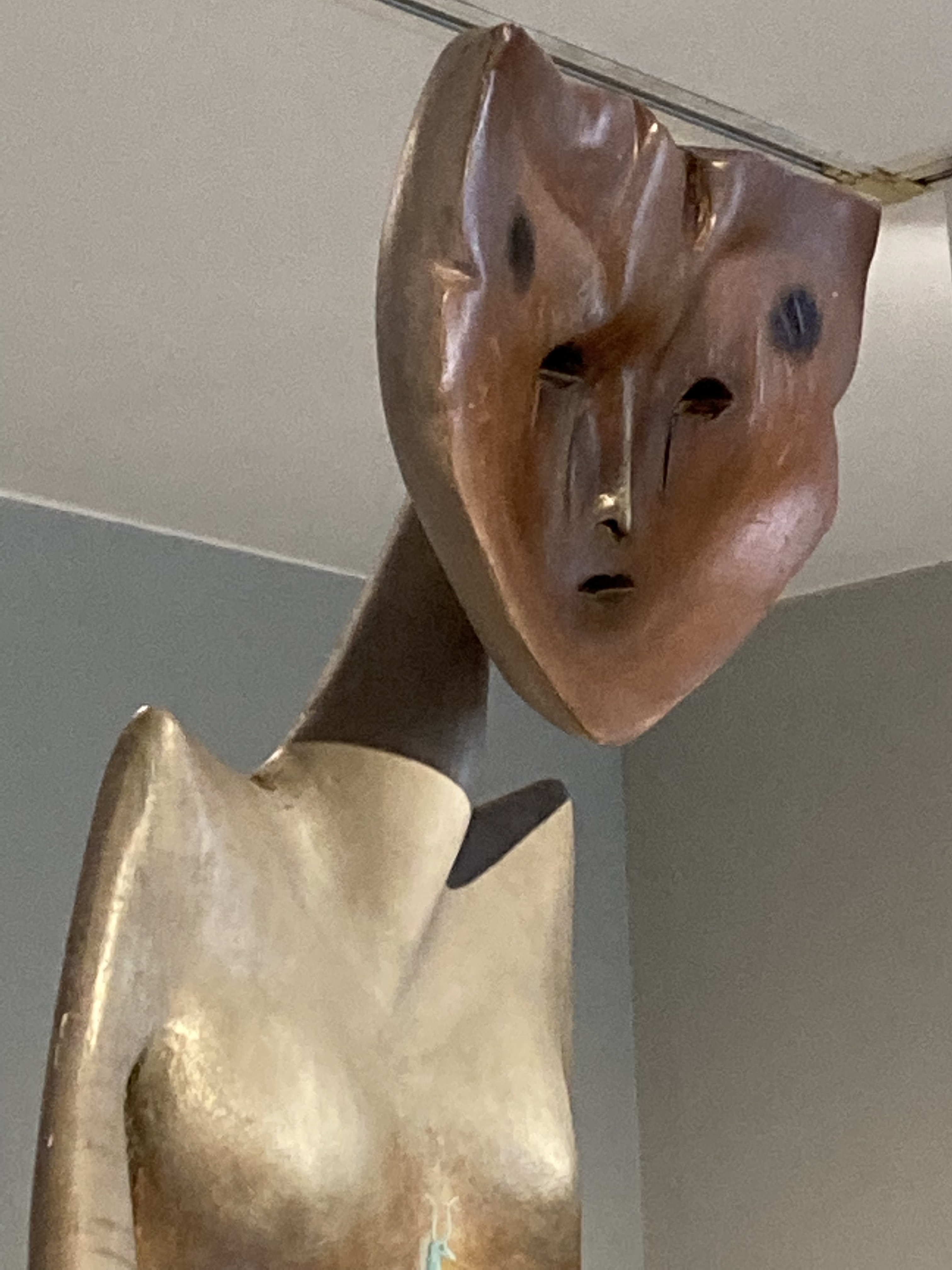



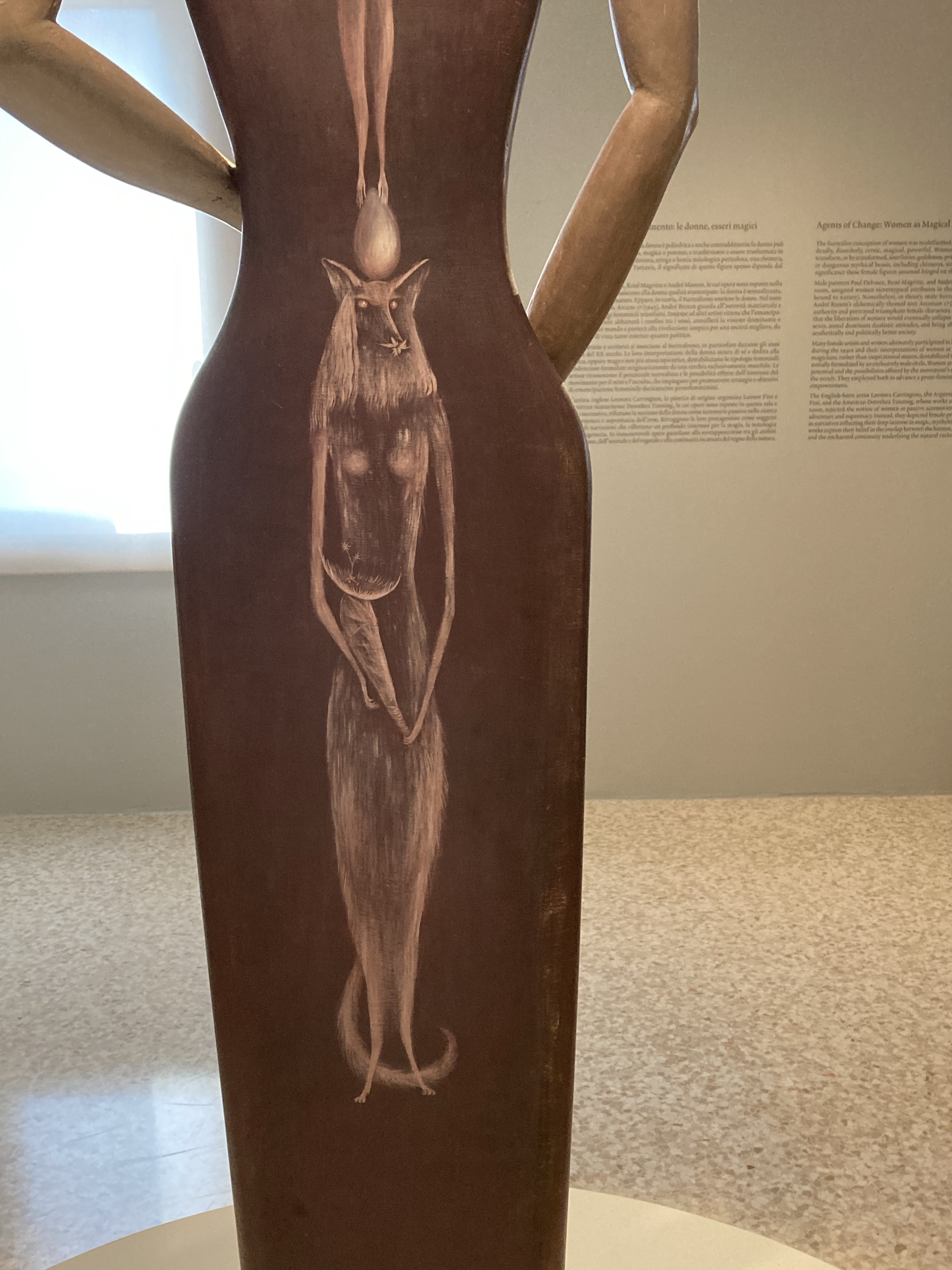

Then comes Carrington at her best – a series of vignettes showing crazy characters, light and dark, ladders, pathways, open windows, varying depths and perspectives. For me this is pure Carrington.
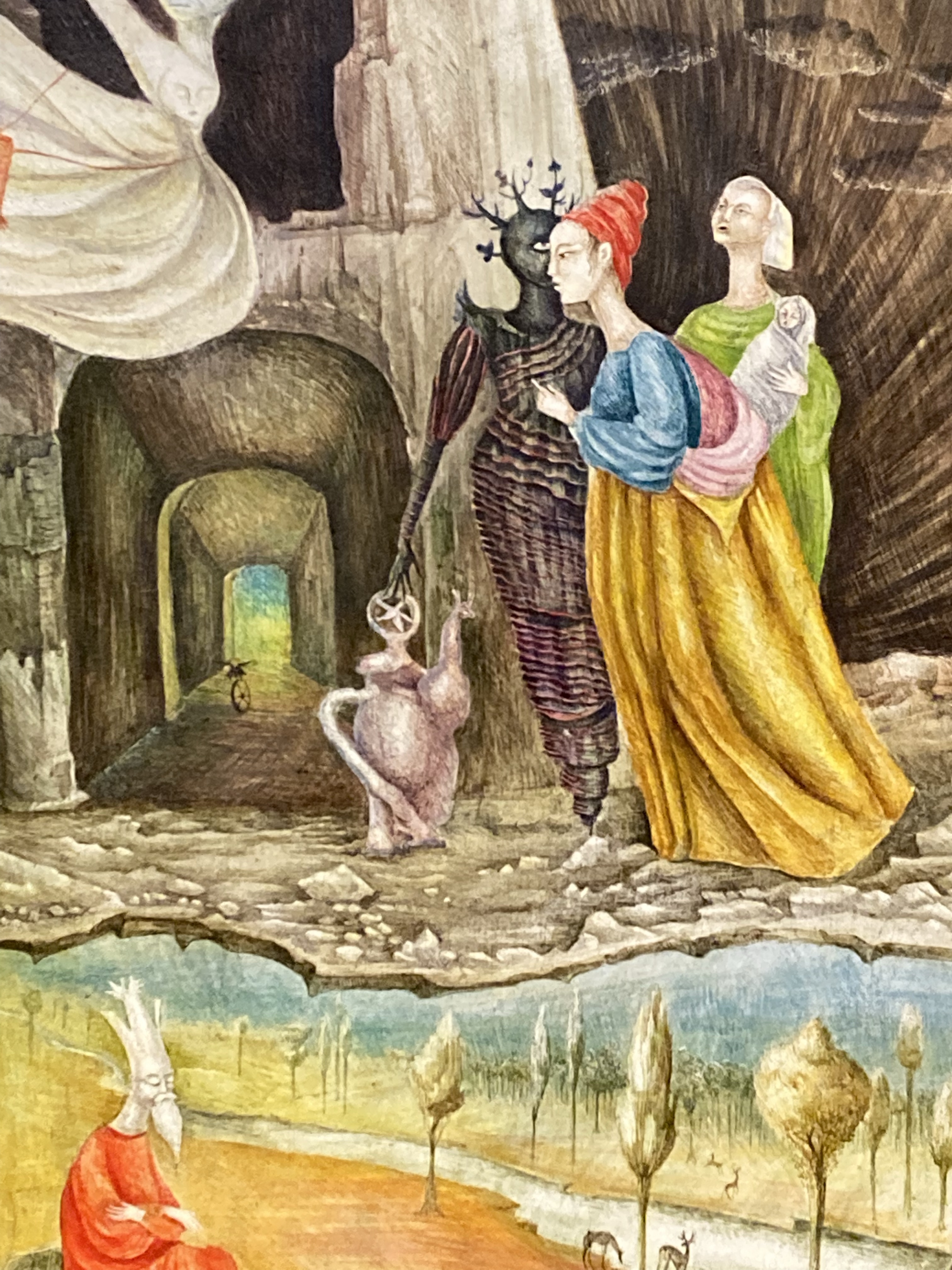


Then the exhibition develops into a show case for Leonora Carrington’s friends and fellow artists who worked together in Mexico City for many years; Remedios Varo and Leonor Fini. This trio of women inspired, enriched and expanded the artistic horizons of one another’s lives. I was particularly impressed with the paintings of Remedios Varo……
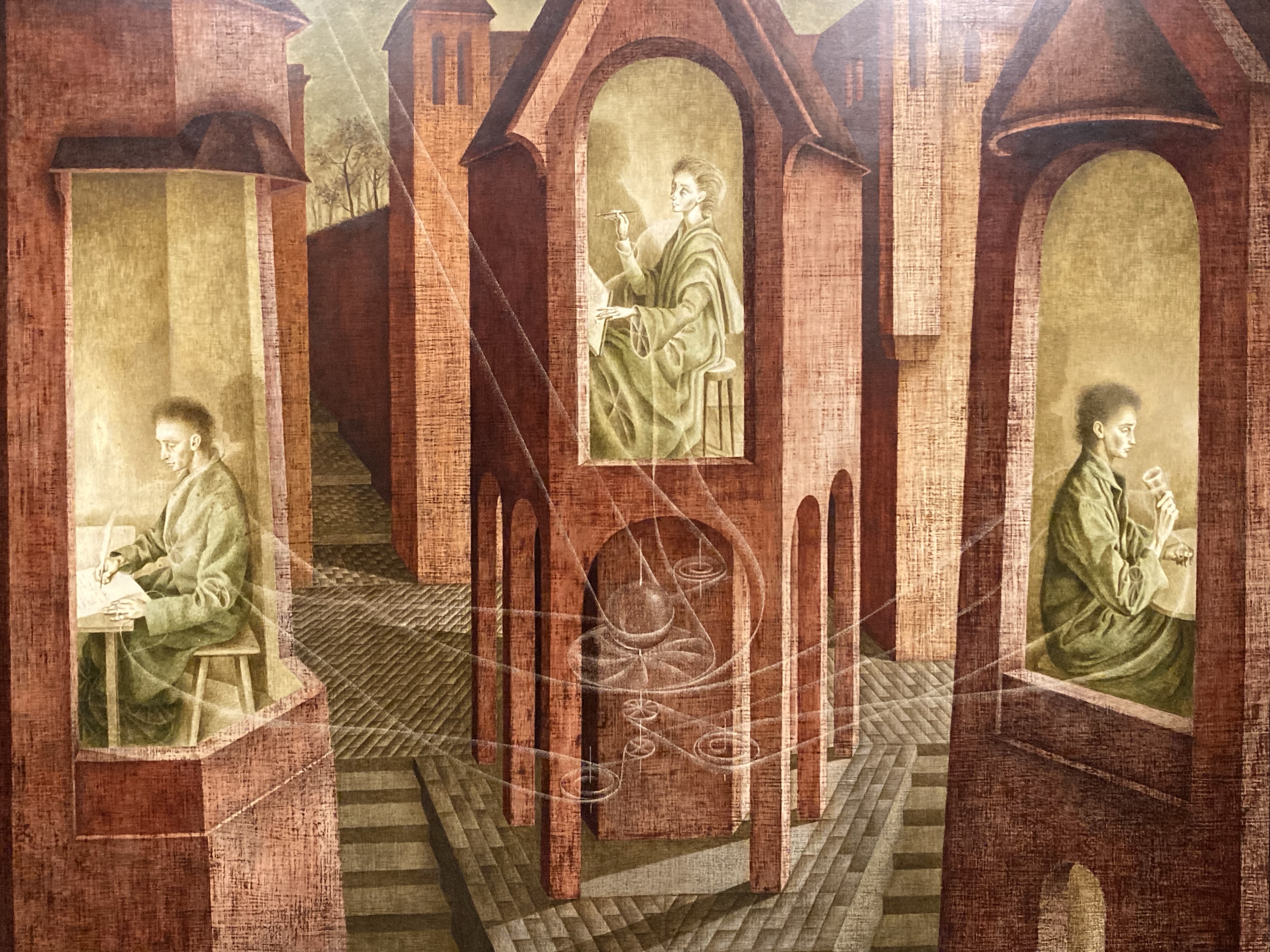
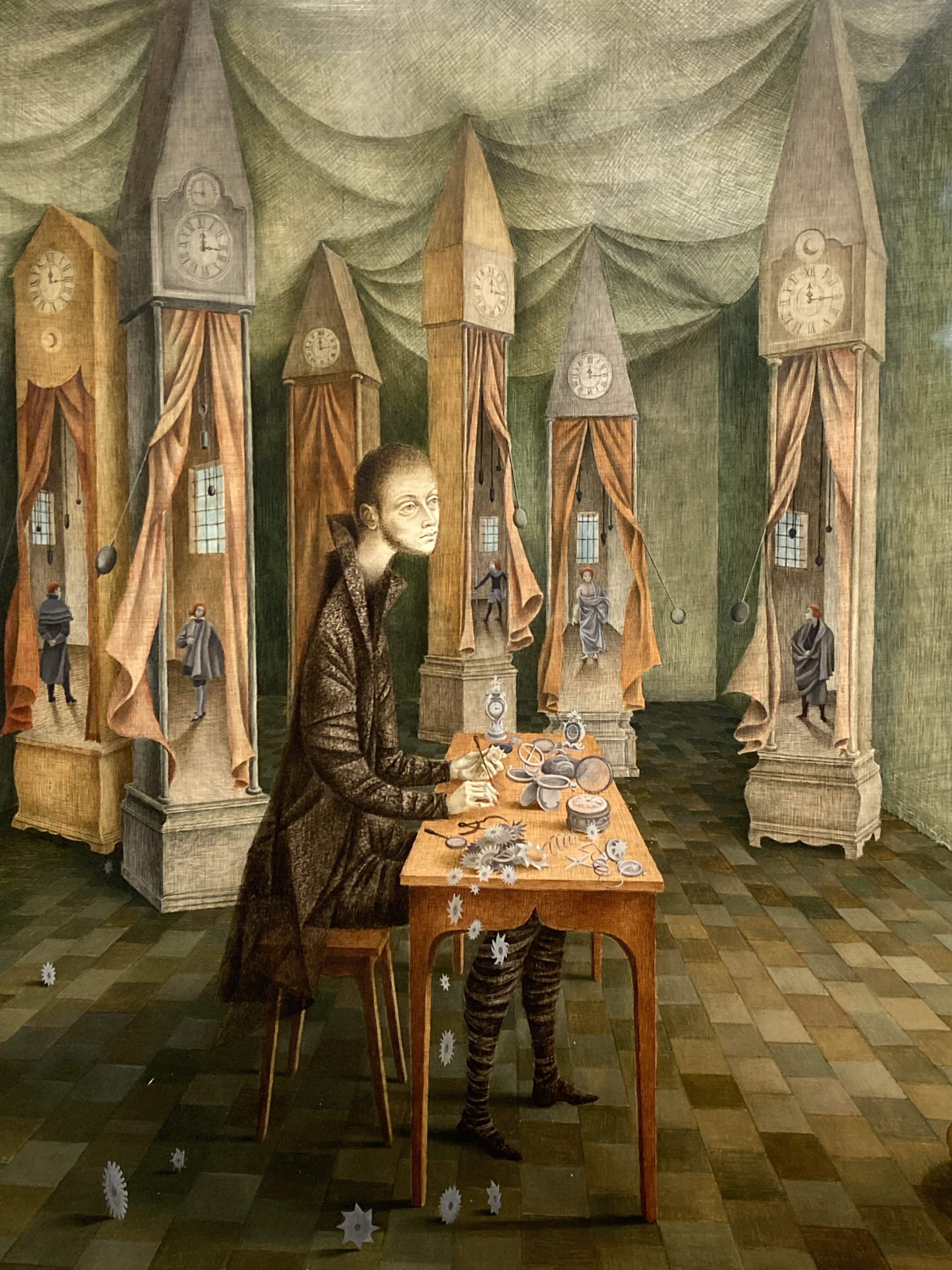
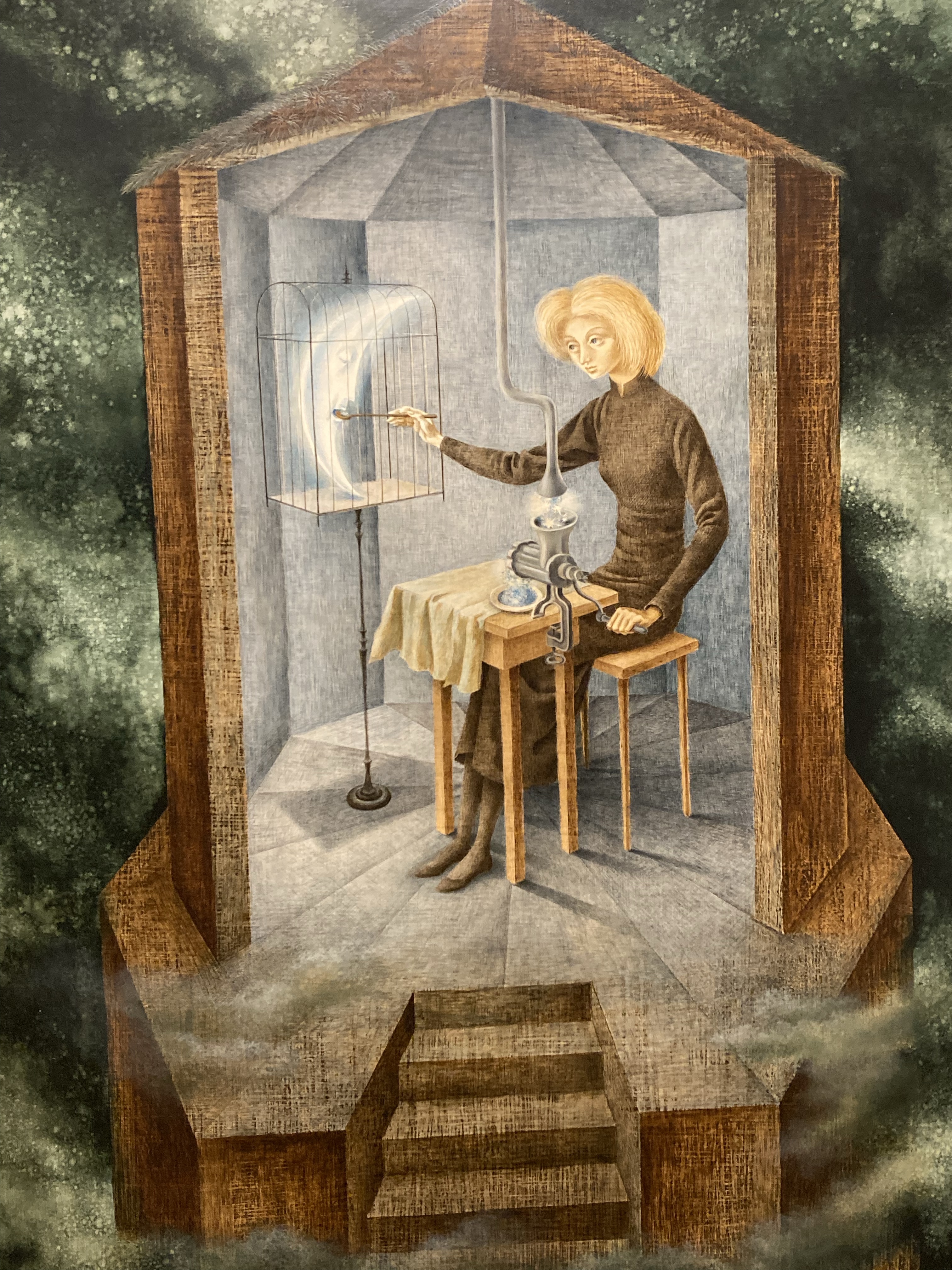
Leonor Fini – an Argentinian artist is also represented in the show, known for her powerful, female portrayals. Grazina has chosen this ‘Principessa’ to overwhelm us with her strength and character (below)…
Fini and Carrington exhibited together in Peggy’s ‘31 Women Artists’ show in New York in the early 40s.

The title of the show ‘Surrealism and Magic’ encourages me to think about the alchemy and magic that can often be seen in the detail of a surrealist painting. Immediately I think of Carrington’s female figures at a tea party, in the kitchen or involved in a scientific experiment. Test tubes, flames and glass flasks from a chemistry lesson are often to be seen in her paintings.
The show closes with a room called ‘Indefinite Divisibility’ the name comes from a painting by Yves Tanguy – a complicated Dali-esque painting, where solid forms liquify and metallic power is everywhere. In fact Salvador Dali is in this room too. I need to come back to the exhibition to investigate this room further. For now my visit is over and the power of the female surrealists is palpable. I actually need time to think.

Bursting out of the carefully regulated, temperature-controlled rooms of the exhibition, I emerge into the Guggenheim courtyard to breathe in fresh air and absorb the blue sky. I’m confronted by Alexander Calder’s bright red ‘La Vache’ a wonderful, bold, brazen sculpture from the 1970s. Calder was another of Peggy’s protégés. I suddenly realise that Peggy’s art collection has created a life of its own, it’s a living dynamic, pulsating being. Here on the edge of the Grand Canal, in this liminal city, floating in the lagoon between land and sea, Peggy created her own ‘surreal’ kingdom. An environment, neither real nor imagined, a fusion of both. Private and public, intimate and yet grand. Perfect for the city of Venice – who just like the surrealist artists – is a big of an enigma herself.

Notes:
- I’ve written about Leonora Carrington on several occasions:
- Leonora Carrington
- Leonora Carrington – Surrealist artist
- I’ve also written about Peggy:
- Venice – Peggy Guggenheim, Damien Hirst and Modern Art on the Grand Canal
- Peggy Guggenheim – Modern Art in Venice
The show ‘Surrealism and Magic’ runs from now until September. Then in October it will be at The Barbarini Palace, Potsdam. Strongly recommended. A great way to discover more about surrealism and to appreciate the magic of The Guggenheim, Venice.
Congratulations to: Grazina Subelyte.
27th April, 2022

One thought on “Surrealism and Magic – Venice”